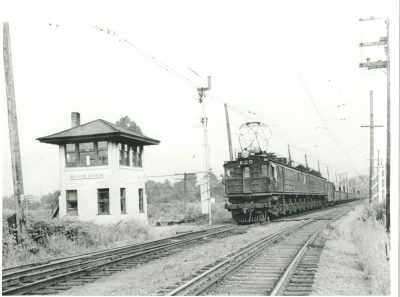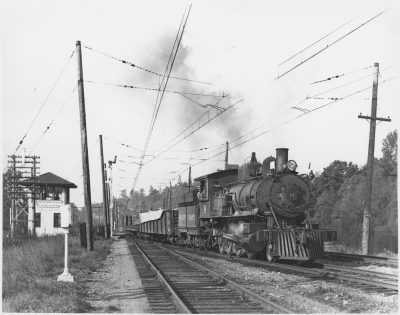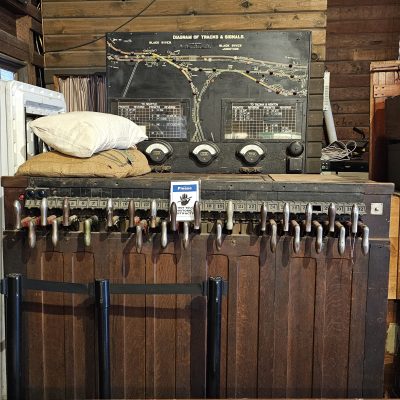
A Milwaukee Road train headed by boxcab electric E-25 rolls past the Black River interlocking tower at Tukwila, Washington circa 1935. Charles Turner photo, NRM collection.
Interlocking towers were constructed by railroads to control and manage junctions and crossings to prevent accidents. Often, this was where several railroads met. It’s hard to imagine where four different railroads met south of Seattle today. Yet, just west of Renton, there was such a location.
Near Tukwila, where the Black River merged with the White River to become the Duwamish River, the Pacific Coast Railway turned east towards Maple Valley. Originally built in 1874 as the 3-foot gauge Seattle & Walla Walla, the line was intended to be a major transcontinental, ultimately hauling coal out of Newcastle and Black Diamond. In 1883, a third rail was laid from Black River north to allow the Puget Sound Shore Railroad (later the Northern Pacific) access to Seattle from Tacoma.

Pacific Coast Railroad locomotive #14 pulls a train past the Black River tower at Tukwila on October 22, 1935. Overhead wires are the catenary for the Milwaukee Road’s electric locomotives. Charles Turner photo, NRM collection.
Another railroad joined in 1906, when what was commonly known as The Milwaukee Road obtained trackage rights along the Pacific Coast from Maple Valley to Seattle, as well as building its own line south to Tacoma.
This was joined in 1908 by the Oregon-Washington Railway & Navigation Company, a Union Pacific subsidiary, who shared trackage rights with the Milwaukee Road from Tacoma to Black River. At Black River, they split off and began their own line to Seattle.
With the Milwaukee Road line crossing the double-track NP mainline, and five different approaches to the crossing, there was a need for protection to keep the crossing safe. As the Union Pacific was the last railroad to arrive, they built Black River tower as protection in 1914.

The former Black River tower model board and control frame on display in the Snoqualmie Depot freight room.
Black River remained in operation until 1977 when operation was moved remotely. The tower was demolished in 1983. However, the model board and control frame were donated to the Museum and are on display in the Snoqualmie Depot freight room. In our next blog post, NRM will explain just what an interlocking tower is.

